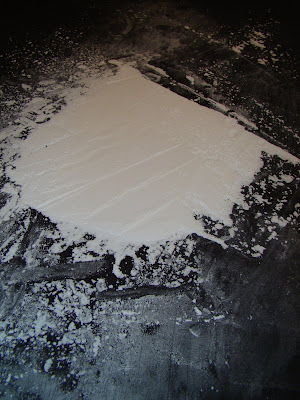Background information:
Sound is made from waves.
• Different tones and volumes make differently shaped waves
Sound can travel through solids, liquids, and gasses.
• Solid – sound travels through walls, through strings (tin can phone)
• Liquid – talking underwater in the swimming pool
• Gasses – talking into the air
Hypothesis
We can’t see waves in air, but we can see waves in water and waves in sand. If we put sound vibrations into water and sand, we should be able to see the waves the sound makes.
Question:
Which material does the sound wave show up the best in?
Water? Grains (salt)? Powder (powdered sugar)? Or Non-Newtonian Fluid (Oobleck)?
Observations:
- The grains of salt did not show the waves very well...
- Sound vibrations caused the powdered sugar to clump into mountains and hills but it was too clumpy to show small waves.
- The water was fluid and so it easily copied and magnified the motions of whatever it was on. Vibrations showed up clearly in the water.
- The Oobleck sometimes acted like the powdered sugar with lumpy hills/mountains, and sometimes acted like the water with ripples/waves.
Conclusions:
Is it possible to See Sound?
Yes, we can see sound waves in water, powders, and oobleck.
What is the best way to see sound?
Water is the best way to see sound. Water moves fastest, and copies the vibrations it feels the best.
Do different sounds look differently?
Yes. Sound waves change with pitch and volume.
Pitch: Lower notes make larger slower waves. High notes on the piano make smaller faster waves. Pitch controls the frequency of the sound wave.
Volume: Louder sounds make taller waves. The amplitude of the wave changes with volume.












































